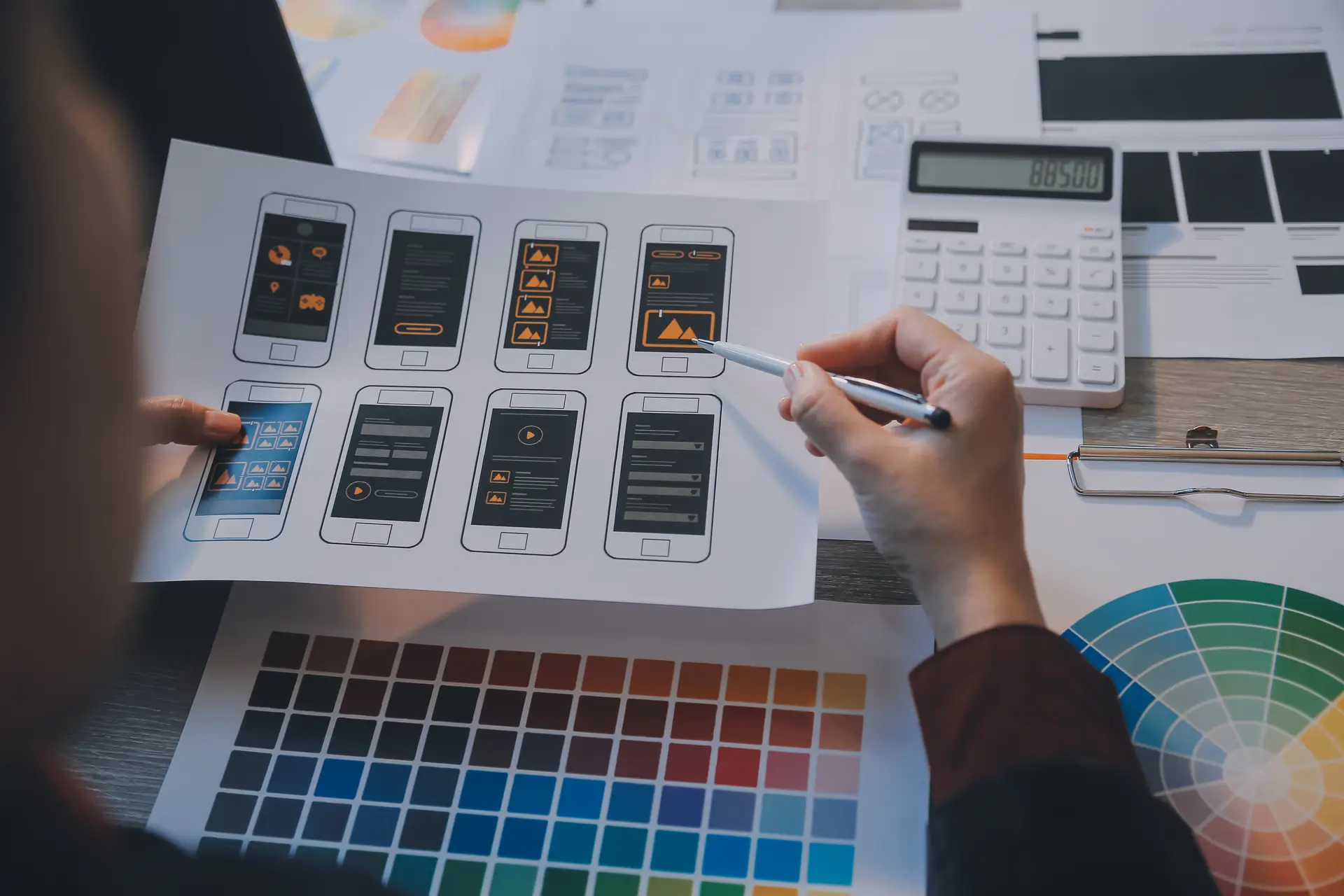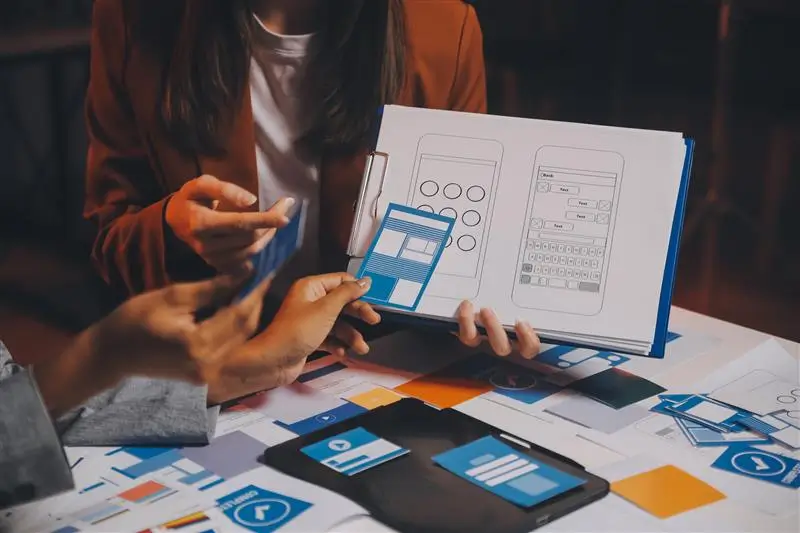Are you wondering about the UX design process? Don’t worry, we are here to guide you. The UX design process is a structured approach. To create products that provide meaningful and relevant experiences to users. It involves understanding user behaviors, needs, and motivations. Through various methods, and applying this understanding to design products. They are both functional and enjoyable to use.
Let’s dive deep into the UX design process from a new perspective. Here you will learn to design UX process and UI UX design process. Further, you will explore the design process UX.
If you are looking for professional Ui and Ux Design services in the US, then just click here
Key Steps in the UX Design Process
While the UX design process can vary. Depending on the project and organization. Generally, it includes the following steps:
1. Define the Project and Scope
Begin by clearly defining the project’s goals, target audience, and scope. This involves collaborating with stakeholders. To understand business objectives and user needs. Establishing a clear vision helps guide the design process. It also ensures alignment among all team members.
2. Conduct User Research
Gather insights about your users through various research methods. Such as interviews, surveys, and observations. Understanding user behaviors, motivations, and pain points is important. For creating designs that truly resonate with your audience.
3. Analyze Research Findings
Analyze the data collected during the research phase. To identify patterns and key insights. Create user personas and journey maps to visualize user experiences. Further, highlight areas for improvement. This analysis informs design decisions and helps prioritize features.
4. Ideate and Sketch Solutions
Brainstorm potential solutions to address user needs and business goals. Encourage creativity and consider multiple perspectives. Sketching ideas allows for quick exploration of concepts. It facilitates collaboration among team members.
Are you looking for professional UI/UX design services? Then just click here to get the best services.
5. Create Wireframes and Prototypes
Develop wireframes to outline the structure and layout of your product. Progress to creating interactive prototypes. That simulate the user experience. Prototypes enable testing and validation of design concepts before investing in full development.
6. Conduct Usability Testing
Test your prototypes with real users to gather feedback on usability and functionality. Identify any issues or areas of confusion. Use this information to refine your designs. Iterative testing ensures that the final product meets user expectations.
7. Implement and Launch
Collaborate with developers to bring your designs to life. Make sure that the implementation aligns with the design specifications. It maintains the intended user experience. Prepare for launch by conducting final quality assurance checks. Also, addressing any remaining issues.
8. Monitor and Iterate
After launch, continue to monitor user interactions and gather feedback. Use analytics and user input to identify opportunities for improvement. The UX design process is iterative. Ongoing refinement is essential for maintaining a successful product.
Explore here what a UI/UX designer does. Learn about their skills and duties.
Best Practices in UX Design Process
To enhance the effectiveness of your UX design process. Consider the following best practices:
- User-Centered Focus: Always prioritize the needs of your users. It should be your first priority. Focus on it throughout the design process.
- Accessibility: Design products that are accessible to all users, including those with disabilities.
- Consistency: Maintain visual and functional consistency across your product. To provide a seamless user experience.
- Feedback Loops: Establish mechanisms for continuous user feedback to inform ongoing improvements.
- Collaboration: Foster cross-functional collaboration among designers. Also, among developers and stakeholders. It helps to ensure cohesive product development.
Find why UI/UX design services are game game-changer in 2025
What is the UI UX Design Process?
The UI UX design process is a step-by-step approach to creating digital products. That offers a seamless and enjoyable user experience. It involves understanding user needs, conducting research, and creating wireframes. Also, prototyping and testing the interface for usability and visual appeal. A strong UI UX design process ensures that the final product is both functional and user-friendly. It enhances the overall satisfaction and engagement.
If you are looking for professional Ui and Ux Design services in the US. Then just click here to get the offers and services
Final Thoughts On Ux Design Process
The UX design process is a dynamic and iterative approach. To creating products that meet user needs and business objectives. By following a structured process that includes research, analysis, design, testing, and iteration. Designers can develop user-centered solutions that provide meaningful experiences. Embracing best practices and maintaining a focus on the user. Ensures the creation of products that are both functional and enjoyable to use.
FAQs
Q1: What is the UX design process?
The UX design process is a series of steps that designers follow to create products. That provide meaningful and relevant experiences to users. It includes defining the project, conducting user research, analyzing findings and ideating solutions. Also, prototyping, testing, implementing, and iterating are included.
Q2: Why is user research important in design UX process?
In the design UX process, the user research provides insights into user behaviors, needs, and pain points. Which are essential for creating designs that resonate with the target audience. It helps the product meets user expectations and solves real problems.
Q3: How does usability testing contribute to the design process UX?
Usability testing involves evaluating a product by testing it with real users. It helps design process UX to identify usability issues, gather feedback, and validate design decisions. Leading to a more user-friendly and effective product.
Q4: What is the role of prototyping in UX design process?
Prototyping allows designers to create interactive models of their designs. It enable testing and validation of concepts before full development. It helps identify potential issues early and facilitates stakeholder feedback.
Q5: How often should the UX design process be revisited?
The UX design process should be revisited regularly. Especially when new user feedback is received. Then, business goals change, or technological advancements occur. Continuous iteration ensures that the product remains relevant and effective.







